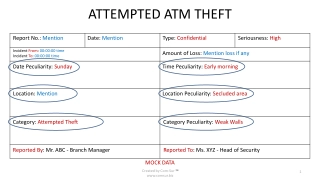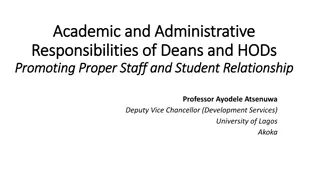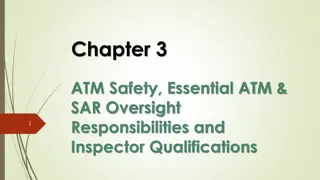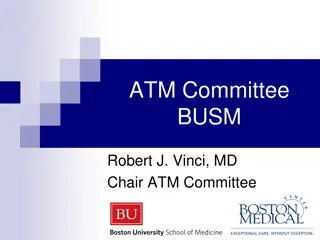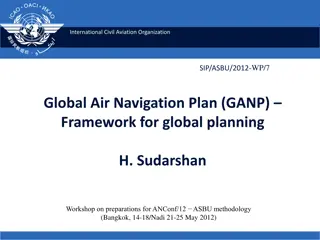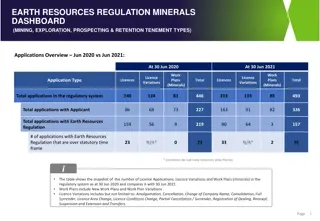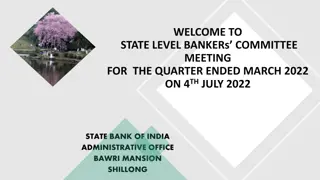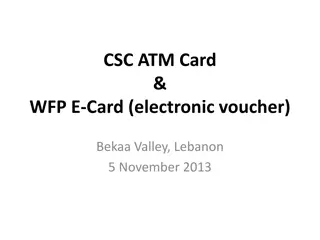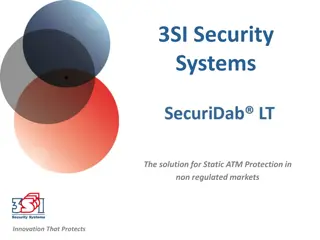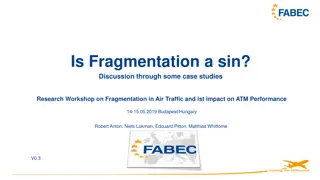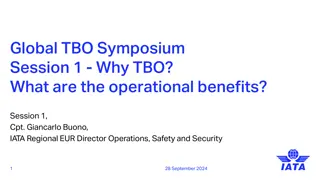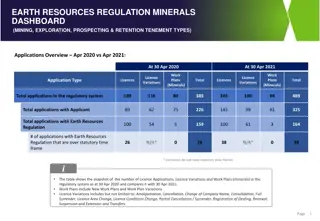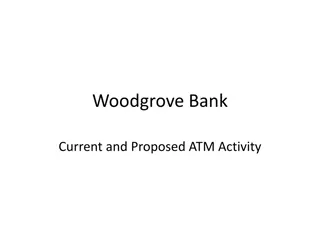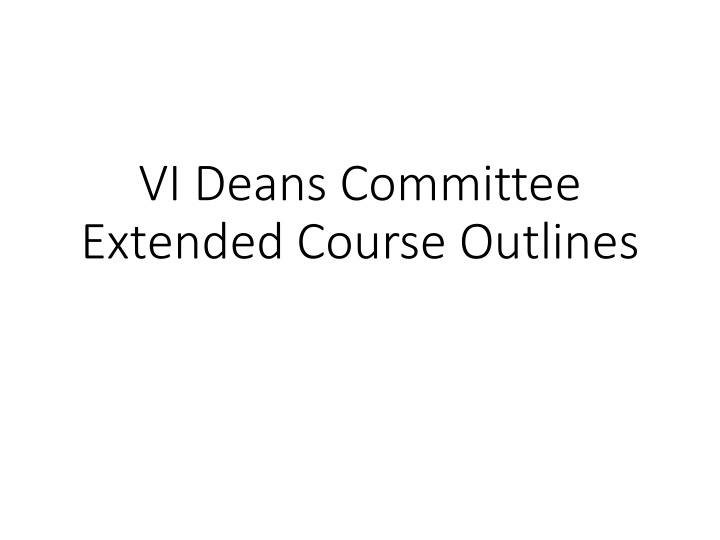
Enhancing Communication Skills and Self-Development Through Language Proficiency
Explore the comprehensive course outlines for SAEX 111: Communication Skills, covering topics such as verbal and written communication, vocabulary development, grammar, and practical skills like public speaking and listening comprehension. Enhance your communication abilities and self-esteem through effective communication techniques and language proficiency.
Download Presentation

Please find below an Image/Link to download the presentation.
The content on the website is provided AS IS for your information and personal use only. It may not be sold, licensed, or shared on other websites without obtaining consent from the author. If you encounter any issues during the download, it is possible that the publisher has removed the file from their server.
You are allowed to download the files provided on this website for personal or commercial use, subject to the condition that they are used lawfully. All files are the property of their respective owners.
The content on the website is provided AS IS for your information and personal use only. It may not be sold, licensed, or shared on other websites without obtaining consent from the author.
E N D
Presentation Transcript
VI Deans Committee Extended Course Outlines
SAEX 111 SAEX 111 (1+1): Communication Skills (1+1): Communication Skills Sl. No. Lecture Content No. of Lectures 1 Teacher 1 Communication: Meaning, concept, definition, functions and purposes Ag. Extn. The Nature and significance of Communication Dynamic, Complex and Intentional or unintentional. The Significance of Communication - Relationship building, Information sharing. Types of Communication Models of Communication- Aristotle model, lassewell model, shanaon and weaver model, leagans model, Berlo model, Rogers and shoemaker model, Schramm model, Westley and Mclean model The Communication Process elements of communication process, extension communication system model Barriers in communication Linguistic and Non-linguistic barriers Communication Gaps / Miscommunication: Concept, reasons and Communication terminologies: Credibility, Feedback, Perception, Fidelity, Empathy, Noise, Entrophy, Time lag, Homophily, heterophily and communication competency The Magic of Effective Communication: Understanding, Building Relationships - Strengthening bonds and fostering trust, Resolving Conflicts, Inspiring Action and Enhancing Personal Growth. Building Self-Esteem and Overcoming Fears Concept and ways to build self esteem & overcome fear. Listening skills: Myths about Listening, Types of listening, tips for effective listening. Reading skills: concept, importance, types of reading, Barriers of reading. 2 3 1 1 4 1 5 6 1 1 7 1 8 1 9 10 1 1 (AEX) 1(English) Speaking skills: Concept, Importance of speaking, Preparation of speech
SAEX 111 SAEX 111 (1+1): Communication Skills (1+1): Communication Skills a. Writing Skills: Concept, Importance of writing, Types of writing and systematic approach for effective writing Writing Skills: Paragraph/Essay writing, Pr cis writing, Letter writing Formal, Informal letters, Preparation of CV/Resume and Job applications, Interview skills, Reading Comprehension Innovative Methods to Enhance Vocabulary: Analogy, and Questions - Vocabulary Enhancement through Analogy Skills and Questioning Skills. Sounds and Phonetic Symbols: Vowels, Consonants Functional and Structural Grammar: Parts of speech, Subject Verb Agreement, Articles, Construction and Transformation of sentences. Vocabulary Development: Antonym, Synonym, Homophones, Homonyms Total Classes = 20 (10+10) Agril. Extn. & English 3 English 11 b. 12 1 13 14 1 3 15 1
SAEX 111 SAEX 111 (1+1): Communication Skills (1+1): Communication Skills Sl. No. Practical Content No. of Practical Classes 2 Teacher 1 Listening (Distortion of message) and Note taking skills Reading Comprehension Micro presentations Impromptu Presentation: Feedback on Presentation. Agril. Extn. 2 3 4 1 1 2 Agril. Extn. English Agril. Extn. 5 6 7 8 9 10 11 12 13 14 15 Stage Manners Stage Manners Group Discussions Group Discussions Public speaking Exercises Public speaking Exercises Organization of Events Listening Comprehension Listening to short talks, lectures, speeches Reading Comprehension Interview Skills Total Classes = 18 ( 10 +8) 50 % each Agril. Extn. & English 1 1 1 1 2 1 1 1 1 1 1 Agril. Extn. English Agril. Extn. English Agril. Extn. English. Agril. Extn. English English English English
SAEX 112 (2+0): Rural Sociology and Education Psychology SAEX 112 (2+0): Rural Sociology and Education Psychology Sl. no. Extended syllabus Hours 1. Extension Education and Agricultural Extension: Meaning, definition,scope,and importance. Sociology and Rural Sociology: Meaning, definition, scope, importance of rural sociology in Agricultural Extension, and interrelationshipbetween rural sociologyand Agricultural Extension. Indian Rural Society:importantcharacteristics,differences and relationshipbetween rural and urban societies Social Groups: Meaning, definition, classification, factors considered information and organization of groups, motivation in group formationand role of socialgroups in Agricultural Extension. 2 2. 2 3. 4. 2 2 5. Social Stratification: Meaning, definition, functions, basis for stratification, forms of social stratification- characteristics and- differences between class and caste system. Cultural concepts: culture, customs, folkways, mores, taboos, rituals. Traditions: Meaning, definition and their role in Agricultural Extension SocialValues and Attitudes:Meaning, definition,types and role of socialvalues and attitudesin agricultural Extension. 2 6. 3 7. 3 8. Social Institutions: Meaning, definition, major institutions in rural society, functions, and their role in agricultural Extension. SocialOrganizations:Meaning,definition, typesof organizationsand role of socialorganizationsin agriculturalExtension. 2 9. 2 10. SocialControl:Meaning, definition,need of social controland means of socialcontrol. 2 11. Socialchange: Meaning, definition,nature of social change, dimensionsof socialchange and factorsof socialchange. 2 12. Leadership: Meaning, definition, classification, roles of leader, different methods of selection of professional and lay leaders. Training of Leaders: Meaning, definition, methods of training, Advantages and limitations in use of local leaders in Agricultural Extension. Psychology and educational psychology: Meaning, definition, scope, and importance of educational psychology in Agricultural Extension. Intelligence: Meaning, definition, types, factors affecting intelligence and importance of intelligence in Agricultural Extension. Personality:Meaning, definition,types, factorsinfluencing the personality and role of personalityin agriculturalExtension. 3 13. 3 14. 3 15. 3 16. Teaching- Learning process: Meaning and definition of teaching, learning, learning experience and learning situation, elements of learning situation and its characteristics, Principles of learning and their implication of teaching 3
SAEX 121 (1+1): Personality Development SAEX 121 (1+1): Personality Development Sl. No. 1 Personality: Definition, Nature of personality, theories of personality; (Psychoanalytic Theories, Behavioural Approach to Personality, Humanistic Approach to Personality and Trait Theories of Personality), Types of personality; (Introversion, Self-absorption, Extroversion, Self- Confidence, Gregarious,Pleasantness, Agreeableness, Narcissism, Self-Importance, ApprehensiveHesitant and Diffident) 2 Humanistic approach Maslow's self-actualization theory; Abraham Maslow: Hierarchy of needs, Carl Roger: Focus on self, Shaping of personality,Determinants of personality 3 Myers-Briggs Typology Indicator (Extroversion-introversion (E-I), Sensation-intuition (S-N), Thinking-feeling (T-F), and Judgment-perception (J- P)), Locus of control and performance, 4 Type A Behaviours (competitive, Time Urgent, Hostile and Aggressive) and Type B Behaviours (Relaxed, Patient and Easy going), Personality and Organizational Behaviour. 5 Foundations of individual behavior {B= f (P, E, O)} and factors influencing individual behavior (Personal, Psychological, Organizational system and resources and Environmental factors), Models of individual behavior (Theory X and Theory Y, Economic and Self-actualization Theory, Behavioristic and Humanistic Theory,Rational and EmotionalTheory) 6 Perception and attributes, Types of attributes; (Simple attribute, Composite attribute, single Valued attribute, key attribute, derived attribute and multivalued attribute) and factors affecting perception (Factors in perceiver, factors in situation, factors in target), Attribution theory and case studies on Perception and Attribution. 7 Learning: Meaning and definition. Types of theories; (Behaviorism theory, Cognitive theory, Adult learning theory, Connectivism theory, Social learning theory and Constructivist theory) and Principles of learning; (Principle of Readiness, Principle of Intensity, Principle of Learning, Principle of Association, Principle of Reinforcement, Principle of Recency, Principle of Effect) 8 Learning behavior types; (Habituation, Sensitization, Imprinting, and Conditioning) and Organizational behavior types; (Autocratic behaviour, Democratic behaviour, Laissez-faire behaviour, Bureaucratic behaviour, Transformational behaviour, Transactional behaviour and Servant behaviour)Learning and training, types of training; (Induction, On-the-job and Off-the-job), learning feedback. 9 Attitude and its types; (Positive Attitude, Negative Attitude, Neutral Attitude, Proactive Attitude, Reactive Attitude, Assertive Attitude and Aggressive Attitude) and Values and its types; (Behavioural,Interpersonal,Social, Business and Cultural values) 10 Intelligence- types of Intelligence; (Linguistic, Logical-Mathematical, Bodily-kinesthetic, Spatial, Musical, Interpersonal and Intrapersonal), theories of intelligence; (Spearman s two factor theory of intelligence, Thurstone s theory of intelligence, Guilford s structure of intellect theory, Cattell s theory of intelligence, Gardner s theory of multiple intelligences, Sternberg s triarchic theory of intelligence, PASS theory of intelligence and Cross-cultural conception of Intelligence) Measurements of intelligence; (Verbal Comprehension, Visual Spatial, Fluid Reasoning, Working Memory and Processing Speed), factors influencing intelligence; (Genetics and Environmentalfactors) 11 Intelligence, its types; (Logical-Mathematical Intelligence, Linguistic Intelligence, Interpersonal Intelligence, Intrapersonal Intelligence, Musical Intelligence , Visual-Spatial Intelligence, Bodily-Kinaesthetic Intelligence, Naturalist Intelligence and Existential Intelligence) and Organizationalbehavior, their models; (Autocratic model, Custodial model, Supportive model and Collegial model) 12 Emotional intelligence, its components; (Empathy,Effective communication or Social skills, Self-awareness, Self-regulation and Motivation) 13 Motivation theories, types; (Maslow's hierarchy of needs, Vroom's expectancy theory, Incentive theory, Herzberg's two factor theory, and McClelland's acquired needs theory) and Principles (Motivation is a key to change, Motivation is dynamic, NOT static, Motivation is influenced by internal and externalfactors, Motivation is influenced by social interactions and Motivation can be modified.) 14 Teamwork, types; (Functional teams, Cross-functional teams, Self-managed teams, Troubleshooting teams, Project team and Task-force teams) and group dynamics, stages; (Forming, Storming, Norming, Performing, and Adjourning) CONTENTS
SAEX 121 (1+1): Personality Development SAEX 121 (1+1): Personality Development PRACTICAL 1 2 MBTI personality analysis Learning Styles; (visual learning styles, auditory learning style, kinesthetic learning style and reading/writing learning style) and Strategies, Motivational needs Firo-B. Interpersonal Communication Teamwork and team building Group Dynamics, Win-win game, Conflict Management, Leadership styles Case studies on Personality and Organizational Behavior. 3 4 5 6 7
SAEX 211 (1+1): Fundamentals of Extension Education SAEX 211 (1+1): Fundamentals of Extension Education Sl. No. Topic: Theory Education: Meaning, definition and types Formal, informal and non-formal education, Extension Education- Meaning, definition, need, scope and process; history, objectives, philosophy, principles and approaches. Extension Programme Planning-Meaning, process, principles and steps in programme development Extension systems in India: Extension efforts in pre-independence era: Sriniketan, Marthandam, Firka Development Scheme, Gurgaon Experiment and Post-independence era: Etawah Pilot Project, Nilokheri Experiment Reorganised Extension system (T&Vsystem) and various extension/ agriculture development programme launched by ICAR/GoI (IADP, IAAP, HYVP, KVK, IVLP, ORP, ND, NATP, NAIP). Social justice and povertyalleviation programmes; ITDA, IRDP/SGSY/NRLM. New trends in agricultural extension: privatization in extension, cyber extension/ e-extension, market led-extension, farmer led- extension, expert system. DWCRA, CommunityInterest Groups (CIGs) and Farmer Producer Groups (FPG) Rural Development: concept, meaning, definition, principles and philosophy, Recent Rural development programmes of Govt. of India (SGSY, IAY, MGNREGA, PMRY) Community development: concept, meaning, definition, principles and philosophy. Rural Leadership and Rural Leaders Extension administration; meaning and concepts, principles and functions Monitoring and evaluation: concept and definition, monitoring and evaluation of extension programmes 1 2 3 4 5 6 7 8 9 10 11 12 Transfer of Technology: concept and models Capacity building of extension personnel and farmers: Meaning, Training and Education, Types of training, Training institutes in India, Concept of Human Resource Development Extension Teaching Methods: meaning, classification, individual, group and mass contact methods, merits and demerits of individual, group and mass contact method with examples ICT application in ToT (New and Social Media), Media mix strategies Communication: Meaning and definition, elements, types, principles, and functions, barriers to communication. 13 14 15 16 17 18 Agriculture Journalism- definition and meaning, Print and Electronic media Diffusion and adoption of innovation: Concept and meaning, Attributes of innovation, Innovation decision process, Adopter categories, their characteristics & factors influencingadoption process.
SAEX 211 (1+1): Fundamentals of Extension Education SAEX 211 (1+1): Fundamentals of Extension Education Practicals 1 2 3 4 To get acquinted with university extension system. Group discussion-exercise Identification of rural leaders in village situation Preparation of extension literature(leaflet, booklet, folder, pamphlet new stories and success stories) Presentation skills exercise Micro teaching exercise Visit to village to understand the problems being encountered by the villagers/farmers To study organization and functioning of DRD/PRI and other development departments at district level Visit to NGO/FO/FPO and learning from their experience in rural development Understanding PRA techniques and their application in village development planning Exposure to mass media Visit to community radio and television studio for understanding the process of programme production Script writing, writing for print and electronic media, developing script for radio and television. 5 6 7 8 9 10 11 12 13
Entrepreneurship Development and Business Management 3(2+1) Entrepreneurship Development and Business Management 3(2+1) Objective 1. To provide student an insight into the concept and scope of entrepreneurship. 2. To expose the student to various aspects of establishment and management of a small business unit. 3. To enable the student to develop financially viable agribusiness proposal. Theory Development of entrepreneurship, motivational factors, social factors, environmental, factors, characteristics of entrepreneurs, entrepreneurial attributes/competencies. Concept, need for and importance of entrepreneurial development. Evolution of entrepreneurship, objectives of entrepreneurial activities, types of entrepreneurs, functions of entrepreneurs, importance of entrepreneurial development, and process of entrepreneurship development. Environment scanning and opportunity identification need for scanning spotting of opportunity-scanning of environment identification of product / service starting a project; factors influencing sensing the opportunities. Infrastructure and support systems- good policies, schemes for entrepreneurship development; role of financial institutions, and other agencies in entrepreneurship development. Steps involved in functioning of an enterprise. Selection of the product / services, selection of form of ownership; registration, selection of site, capital sources, acquisition of manufacturing know how, packaging and distribution. Planning of an enterprise, project identification, selection, and formulation of project; project report preparation, Enterprise Management. Production management product, levels of products, product mix, quality control, cost of production, production controls, Material management. Production management raw material costing, inventory control. Personal management manpower planning, labour turn over, wages / salaries. Financial management / accounting funds, fixed capital and working capital, costing and pricing, long term planning and short-term planning, book keeping, journal, ledger, subsidiary books, annual financial statement, taxation. Marketing management- market, types, marketing assistance, market strategies. Crisis management- raw material, production, leadership, market, finance, natural etc. Practical Visit to small scale industries/agro-industries, interaction with successful entrepreneurs/ agric- entrepreneurs. Visit to financial institutions and support agencies. Preparation of project proposal for funding by different agencies.
SMDC 211 Entrepreneurship Development and Business Management (2+1) - 1/3rdPortion Sl. No. CONTENTS Entrepreneurship - Concept & Meaning. Concept of Entrepreneur, Entrepreneurship Development and Agricultural Entrepreneurship - Need and scope. Difference between entrepreneurship and Management. Misconceptions/myths about entrepreneurship Attributes and Characteristics of entrepreneurs - Creativity, need for achievement, risk bearing, decision making, leadership, communication, locus of control, analytical ability, interpersonal skills, self-confidence, market survey and research and business plan Types of Entrepreneurs - Aggressive, imitative, Fabian, drone, empirical, rational cognitive, private, public, small-scale, large scale, solo operators, active partners, inventors, challengers, buyers and life timers. Types of Enterprises based on ownership and size Functions of Entrepreneurs, idea generation, determining objectives, raising funds, procuring raw materials, market research, form of enterprise, recruiting and implementation Development of entrepreneurship, motivational, social and environmental factors entrepreneurship Entrepreneurship Development programme- Evolution entrepreneurial activities Importance and process of entrepreneurial development. Phases in Entrepreneurship Development programme Pre Training, Training and Post Training/ Follow-up. PRACTICAL 1 Visit to small scale industries/agro industries 2 Interaction with successful entrepreneurs/agri-entrepreneurs 3 Visit to financial institutions and support agencies 4 Preparation of project proposals for funding by different agencies 1 2 3 4 5 affecting 6 of entrepreneurship, objectives of 7
SAEX 411 (3+1): Agricultural Journalism SAEX 411 (3+1): Agricultural Journalism Sl. No. CONTENTS 1 2 Journalism - Meaning, nature, importance, and types of journalism. Agricultural Journalism - Meaning, definition, principle, objectives, types, and scope. Similarities and difference between agricultural journalism and other types of journalism. 3 Role of agricultural journalist, Training of agricultural journalist. Qualities of journalist, Role of journalist /journalism in agricultural development and development of newspaper and magazines readers. 4 Newspaper and magazines as communication media: Characteristics, kinds and functions of newspaper and magazines, Characteristics of newspaper and magazines readers. Form, content, style and language of newspaper and magazines, Characteristics of newspaper and magazines readers. Form, content, style and language of newspaper and magazines, Standard part of newspaper and magazines. The agricultural story: Types of Agriculture stories, subject matter of the agricultural story, structure of the agricultural story. electronic media, field study. Success stories-definition, nature, components, guidelines of writing a success story. Writing a news story difference between news and feature story, the principle of writing a news story, Inverted pyramid structure. Organizing the material, treatment of the story, writing the news lead and the body. Readability measure-readability ease score, automated readability index, gunning fog index, How to improve readability of articles and stories. Use of photograph in agricultural journalism- Basic principles of photography composition, exposure, lens, light. Use of artwork (Graphs, charts maps, etc.). Writing the captions. Editorial mechanism: Copy reading, headline and title writing. Proofreading: definition, signs and symbols of proofreading, level of proofreading, duties of a proof-reader. Layout - meaning, principles of layout and design. 5 6 7 8 9 10 11 12 13 14 15 16
SAEX 411 (3+1): Agricultural Journalism SAEX 411 (3+1): Agricultural Journalism PRACTICAL 1 2 3 4 5 Practice in writing an agricultural news story. Practice in writing an agricultural feature story. Covering agricultural events for the information collection. Practice in interviewing for the information collection. Abstracting stories from research and scientific materials and wire services. Selecting pictures and artwork for the agricultural story. Practice in editing, copy reading. Practice in headline and title writing. Practising proof reading. Practice in lay outing of newspaper. Testing copy with a readability formula. Visit a publishing office. 6 7 8 9 10 11 12
SAEX 111 - CS Agri. SAEX 112 - RSEP Agri. SAEX 121 -PD Agri, ABM, Seri., FT, BT, FND SMDC 121 EDBM Seri. SMDC 211 EDBM -Agri. SAEX 211 FEE Agri. SMDC 211 EDBM Engg. ABM SAEX 222 Principles of Mgt & Orgl. Behaviour -ABM SAEX 221 Human Ethics BT SAEX 311 FEE Seri. SAEX 311 PD Engg. SSRA 421 - ETOT SSRA 422 ARS/KVK SSRA 423 AIA SSRA 424 MP SAEX PEJ FND SELM 418 SELD416/SAEX 411 / FRMLS - N SSER 421 ETOT SSER 422 ARSKVK SSER 423 AIA SSER 424 MP SSRE PEWV SELA 414 Agril. Journalism Agri. & FND.




